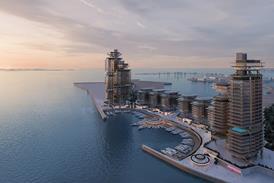Miguel Aguado explores how advanced lighting technologies and biophilic design principles can transform commercial spaces to enhance human wellbeing and productivity
![Miguel Aguado headshot[92]](https://d3rcx32iafnn0o.cloudfront.net/Pictures/480xAny/6/2/1/1982621_miguelaguadoheadshot92_498191.jpg)
There is a reason we feel motivated and inspired when outside, in large open spaces, and surrounded by nature. We evolved for thousands of years alongside the natural light of the sun and have grown to work and respond to those conditions.
This human truth is the foundation of biophilic design – a design ethos that prioritizes occupants’ relationship to nature – which has surged in popularity in recent years. This is especially evident in commercial spaces, where businesses have harnessed this power to enhance wellbeing and productivity.
Commonly recognised biophilic design features include adding vegetation, water features, and organic materials to bring nature into the built environment. However, the role of daylight is often overlooked in workspace design. By combining biophilic principles with the potential of human-centric, intelligent lighting controls and automated shades, a space can have a profoundly positive impact on those within it.
Historically, indoor lighting has never been able to mimic the fluid presence of light in our lives – like sunshine, firelight, and the soft beam of the moon. However, recent advances in lighting technology have allowed for a greater range of indoor lighting possibilities. Electric lighting can now emulate the warm white of the morning sun, the bright, blue-toned white light of midday, and the soft amber of the setting sun to help us relax and prepare for rest.
Designers can emulate these natural light patterns indoors to maximise their benefits with the help of intelligent lighting control technologies like daylight harvesting and automated shading.
Architecture practice Skidmore, Owings & Merrill (SOM) promoted occupant-centric design strategies when redesigning its New York office. SOM developed a biophilic and human-centred design that set a new standard for how interiors care for people.
Charles Harris, associate principal, summed up SOM’s philosophy: “An office today needs to foster non-traditional workstyles in an environment that enhances human wellbeing and minimises carbon footprint.”
Historically, indoor lighting has never been able to mimic the fluid presence of light in our lives
While large windows offer coveted views and more natural light, they also come with excess glare and heat gain. This is where automated shades are crucial. Custom programmed for the space, intelligent shading solutions can automatically adjust to maintain comfortable, natural light, acting as an automatic dimmer for the sun and allowing occupants to experience the benefits of daylight while preserving visual and thermal comfort.
An additional strategy, daylight harvesting, uses the overall control system, along with automated shades and sensors, to dynamically track the available sunlight in the space and adjust shades and electric light levels accordingly. Daylight harvesting supports workspace owners, developers, and occupants by saving energy and money while creating an energising, positive space filled with the natural light that humans crave.
With advanced controls, these shades can fine-tune daylight for any activity or mood at the touch of a button. For example, pressing ‘Presentation Mode’ could automatically lower blackout shades and dim the lights in a meeting room to ensure a presentation is visible. Incorporating weather data and combining it with precise geolocation and astronomical timeclocks allows intelligent lighting systems to adapt in real-time to the environment to preserve wellbeing design principles during the lifetime of an installation.
As biophilic principles become central to modern office design, recognising the role of quality lighting and shading is essential. Prioritising natural daylight and leveraging advanced lighting technologies can create spaces that are not only visually appealing but also enhance human wellbeing and productivity.
Commercial architects and designers have a unique opportunity to transform workspaces by making daylight a fundamental feature. Thoughtful planning and design, combined with investment in total light management solutions, can turn offices into harmonious, people-centric environments that meet modern priorities: efficiency, wellbeing, and convenience.
Postscript
Miguel Aguado is marketing and technology manager at Lutron Electronics
















No comments yet